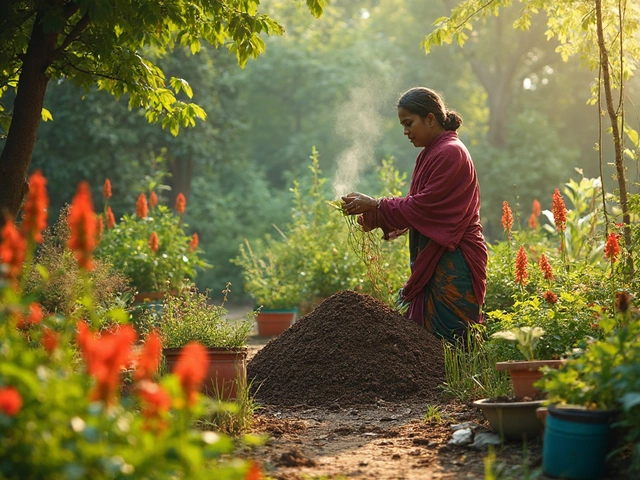Pest Prevention Made Easy for Indian Gardens
Ever wonder why some gardens stay healthy while others get swarmed by bugs? The difference is usually a few small habits that stop pests before they cause damage. Below you’ll find practical steps you can start using today, no fancy chemicals required.
Know Your Common Garden Pests
India’s hot, humid climate invites a range of garden foes. Aphids love the soft leaves of lettuce, beans, and rose bushes. Whiteflies hide on the undersides of tomato leaves and spread disease. Caterpillars munch on chilies and okra. Termites can even weaken the roots of fruit trees. Recognising these pests early saves you a lot of trouble later.
Look for tell‑tale signs: sticky honeydew on leaves, tiny holes, yellowed foliage, or silken webs. A quick visual check every few days lets you catch an outbreak before it spreads.
Natural Ways to Stop Pests
1. Companion Planting – Pair plants that naturally repel each other. Marigolds push away nematodes, while basil keeps flies away from tomatoes. Our post on Sister Plants explains which combos work best for Indian soils.
2. Neem and Neem Oil – Neem is a trusted Indian remedy. Dilute neem oil with water and spray on leaves every week to confuse insects and stunt their growth.
3. Coffee Grounds – Not all plants love coffee waste. Brassicas, strawberries, and azaleas can wilt from excess acidity. Use grounds only around roses or azaleas, and skip them for the plants listed in our guide “Plants That Hate Coffee Grounds.”
4. DIY Garlic or Chili Spray – Blend a few cloves of garlic or a handful of chilies with water, strain, and spray. The strong scent deters aphids and caterpillars without harming beneficial insects.
5. Physical Barriers – A light mesh net over cabbages stops cabbage worms. Row covers keep flying insects away from seedlings. You can set them up in minutes and reuse them season after season.
6. Maintain Good Soil – Healthy soil breeds healthy plants, which are less attractive to pests. Add compost, organic manure, or biochar to improve texture and microbial life. Loose, well‑draining soil also prevents fungal problems that attract insects.
7. Smart Watering – Over‑watering creates a damp environment that many pests love. Use drip irrigation (learn the right burial depth in our drip‑irrigation guide) to water at the base of plants and keep foliage dry.
8. Encourage Beneficial Bugs – Ladybirds, lacewings, and predatory beetles eat aphids and whiteflies. Plant dill, fennel, or coriander to give them a place to live and food to eat.
Mix and match these methods based on what you grow. Start with one or two tricks, watch the results, then add more if needed. The goal is a balanced garden where pests stay low without harming the environment.
Remember, pest prevention is a habit, not a one‑time task. A quick walk through your garden each morning, a splash of neem spray every week, and the right companion plants will keep your garden thriving all year long.
Natural Aromas That Repel Bugs: What Scents Keep Pests Away?
Discover the natural scents that bugs despise most and learn how to use these aromas to keep pests away from your living space. This guide explores the science behind why certain smells are effective at repelling insects, shares practical tips for utilizing these scents at home, and delves into unconventional yet effective natural solutions for bug control. Whether you're dealing with mosquitoes, flies, ants, or other common pests, find out how to make your surroundings inhospitable to these unwanted guests without resorting to chemicals.
About
Pest Control
Latest Posts


Ideal Land for Growing Rice: Best Soil Types & Conditions
By Alden Thorne Oct 19, 2025

Discovering the Most Unhealthy Foods and Healthier Options in Vegetable Gardening India
By Alden Thorne Jan 30, 2025
Lotus Flower: Why It's the Most Iconic Flower of India
By Alden Thorne Jul 10, 2025

